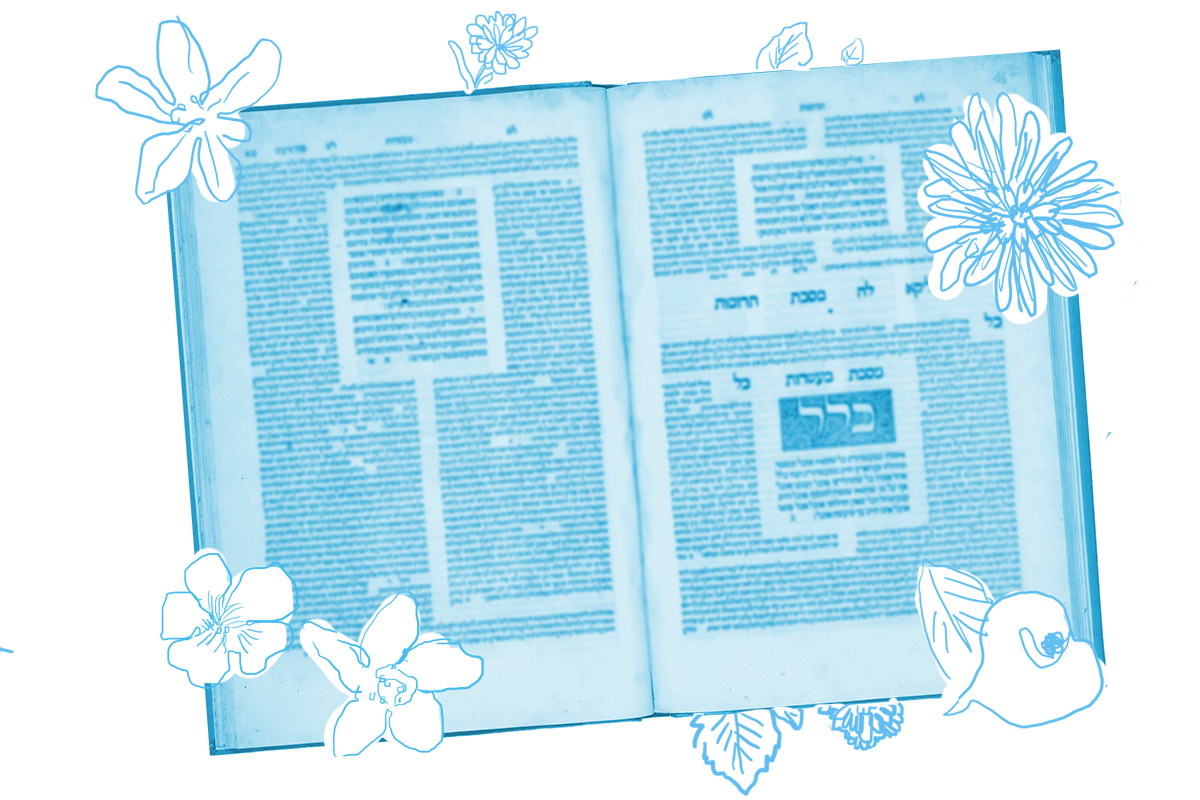Today’s daf is largely devoted to discussing a mishnah from yesterday’s page that describes how signal fires were used to announce that a new month had been declared:
How would they light the torches? They would bring long poles of cedar, reeds, pinewood, and beaten flax, and tie them with a string. Then someone would ascend to the top of the mountain and light the torch on fire and wave it back and forth and up and down, until he would see his colleague doing likewise on the top of the second mountain. And similarly, on the top of the third mountain.
And from which mountains would they light the torches? From the Mount of Olives to Sartava, and from Sartava to Gerofina, and from Gerofina to Havran, and from Havran to Beit Baltin. And from Beit Baltin they would not move (in a specific direction). Rather, the one who was appointed for this task would wave the torch back and forth and up and down, until he would see the entire Diaspora before him alight like one large bonfire.
Once a new month was declared, a signal torch was vigorously waved on the top of the Mount of Olives, just opposite the Jerusalem Temple, until a torchbearer on the next mountain, in Sartava, picked up the signal and lit their own torch. In this way, the message was transmitted from one mountaintop to the next all the way into the Diaspora. At that point, the mishnah tells us, the path would cease to be linear. Instead, the signal would spread in all directions until the entire Diaspora was alight. Another teaching quoted in the Gemara explains this last part in finer detail:

Help us keep Jewish knowledge accessible to millions of people around the world.
Your donation to My Jewish Learning fuels endless journeys of Jewish discovery. With your help, My Jewish Learning can continue to provide nonstop opportunities for learning, connection and growth.
Each and every individual would take a torch in his hand and ascend to the top of his roof.
No longer the duty of a few designated signalers, once we reach the Diaspora every homeowner becomes a bearer of the news that a new month has arrived. Rabbis, take note: Surely, there is a sermon in here about Jews in Diaspora and the transmission of tradition.
Naturally, this all had to be done after dark. One imagines that, in an era of very little light pollution, this cascade of fires created a gorgeous display.
The rabbis of the Gemara immediately set to work determining how this would work. Does one signal the start of every new month? Perhaps it is necessary to only signal those months that are short. Or perhaps better to only signal those that are long (30 days). In addition, the signal can only be transmitted once the new moon has been observed, which creates other challenges. For instance, certain kinds of work were suspended on the first of the month. Someone in Diaspora waiting for the signal might end up observing two days of work suspension while waiting for the signal.
And what if the new month began on Friday? Because of the prohibition against lighting a fire on Shabbat, one would have to delay the signal until Saturday night, which might sow confusion. Multiple solutions to these challenges are posed, though as we know from yesterday’s page, by rabbinic times the signal system had long been defunct, retired after interfering sectarians took to lighting decoy fires in an attempt to establish their own calendar.
The Gemara next teases out the kinds of materials that could be used for these torches. It is here that we find a delightful aside about mining treasure from the sea. After coralwood (a subspecies of cedar) is mentioned as one of the fuels used for these torches, the rabbis then explain how coral (same name, different material) was harvested from the water by thousands of workers. This crew would fill a boat with sand, sink it, tie flaxen ropes to both the boat and the coral, then remove all the sand from the boat and float it back up with the coral. The process was so cumbersome that coral was considered precious — double the price of pure silver.
Speaking of expensive materials, the Gemara explains that some of these woods were especially nice — like myrtle. Today we’ll close with another gem of an aside, touched off by the mention of this species:
Rabbi Yohanan said: Anyone who studies Torah but does not teach it is likened to a myrtle in the wilderness.
Myrtle smells lovely, but in the wilderness there is no one to enjoy its fragrance. Likewise, Rabbi Yohanan teaches, a Torah scholar with no one to teach is a beautiful thing, but not positioned to best advantage. Yet the Gemara seems troubled by the implication that a Torah scholar without students is lacking in value, and offers a more optimistic version:
There are those who say: Anyone who studies Torah and teaches it to others in a place where there are no other Torah scholars is likened to a myrtle in the wilderness, which is especially precious.
Read all of Rosh Hashanah 23 on Sefaria.
This piece originally appeared in a My Jewish Learning Daf Yomi email newsletter sent on November 1st, 2021. If you are interested in receiving the newsletter, sign up here.



